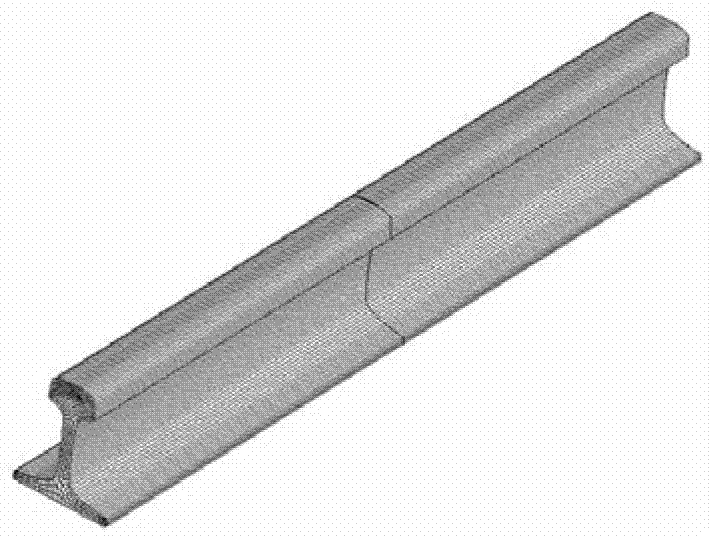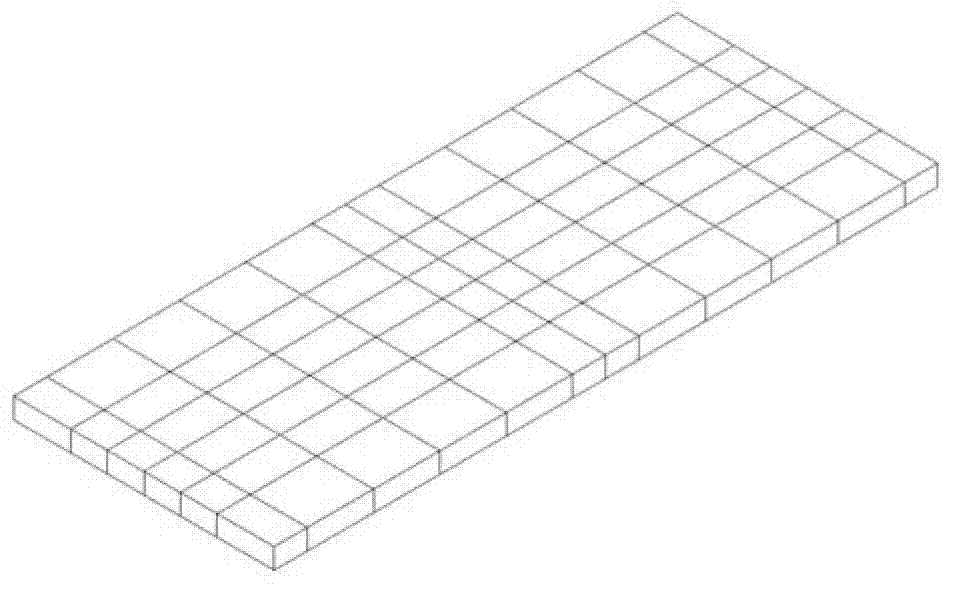Method for designing jointless track of long and large bridge girder longitudinal butt plate type ballastless track for high-speed railway
A technology of slab ballastless track and high-speed railway, which is applied in bridge construction, bridges, tracks, etc., can solve the problems of less research and achieve the effect of detailed model and perfect structure
- Summary
- Abstract
- Description
- Claims
- Application Information
AI Technical Summary
Problems solved by technology
Method used
Image
Examples
Embodiment 1
[0100] This part compares and analyzes the main temperature force and displacement calculation results when the friction coefficient of the sliding layer on the bridge is 0.25, 0.30 and 0.35. Comparison of rail force and rail displacement under different conditions of friction coefficient of sliding layer on bridge Figure 23 with Figure 24 Shown. The zero point of the abscissa is the junction between the abutment and one side of the bridge, the same below. Table 1 and Table 2 compare the main temperature forces and displacement calculation results under different friction coefficients of sliding layers on the bridge.
[0101] Table 1: Comparison of calculation results of main forces under different friction coefficients of sliding layers on bridges
[0102]
[0103] Table 2: Comparison of main displacement calculation results under different friction coefficients of sliding layers on bridges
[0104]
[0105] According to the analysis of the above calculation results, the smaller...
Embodiment 2
[0107] This part compares and analyzes the main deflection force and displacement calculation results when the span length of the continuous beam bridge is (80+128+80) m, (60+100+60) m and (48+80+48) m. The calculation results of the main deflection force and displacement under different continuous beam bridge span length conditions are shown in Table 3 to Table 5.
[0108] Table 3: Comparison of main force calculation results under different continuous beam bridge span length conditions
[0109]
[0110] Table 4: Comparison of main longitudinal displacement calculation results under different continuous beam bridge span length conditions
[0111]
[0112] Table 5: Comparison of calculation results of main vertical displacement and beam end rotation angle under different continuous beam bridge span length conditions
[0113]
[0114] Based on the analysis of the above calculation results, although the longitudinally connected slab ballastless track structure and sliding layer are used...
Embodiment 3
[0116] This part compares and analyzes the main braking force and displacement calculation results when the longitudinal stiffness of the continuous beam bridge pier is 2600kN / cm, 3600kN / cm and 4600kN / cm respectively. The comparison of rail force and rail displacement under different continuous beam pier longitudinal stiffness conditions is as follows Figure 25 with Figure 26 Shown. Table 6 and Table 7 compare the main braking force and displacement calculation results under different continuous beam pier longitudinal stiffness conditions.
[0117] Table 6: Comparison of main force calculation results under different continuous beam bridge pier longitudinal stiffness conditions
[0118]
[0119] Table 7: Comparison of main displacement calculation results under different continuous beam bridge pier longitudinal stiffness conditions
[0120]
[0121] From the analysis of the above calculation results, as the longitudinal stiffness of the continuous beam bridge pier increases, most ...
PUM
 Login to View More
Login to View More Abstract
Description
Claims
Application Information
 Login to View More
Login to View More - R&D
- Intellectual Property
- Life Sciences
- Materials
- Tech Scout
- Unparalleled Data Quality
- Higher Quality Content
- 60% Fewer Hallucinations
Browse by: Latest US Patents, China's latest patents, Technical Efficacy Thesaurus, Application Domain, Technology Topic, Popular Technical Reports.
© 2025 PatSnap. All rights reserved.Legal|Privacy policy|Modern Slavery Act Transparency Statement|Sitemap|About US| Contact US: help@patsnap.com



